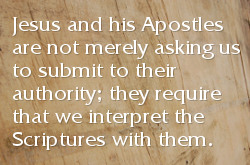Languages and Your English Bible
Many Christians are wrongly intimidated by the fact that they do not understand the original languages of the Bible. Those supposedly “in the know” make assertions that imply their superior status in understanding of Scripture because of their linguistic skills.
In reality, proper interpretation is more often about maintaining an open mind and avoiding logical fallacies. A believer who knows how to read and think, but doesn’t know the original languages, will be a superior interpreter to one who knows the ancient language but cannot think logically. Some highly educated folks cannot distinguish between correlation and cause, description and prescription, or the difference between partial truths and the whole truth.
The languages can make a difference, but not to the degree that some would imply. Muslims, for example, claim the only way to understand the Koran is to read it in Arabic. Christians, on the other hand, have traditionally not made such a claim. Snobs, by definition, would not make such an admission. Fortunately, most evangelical scholars are not arrogant; they will freely admit that understanding the original languages is helpful (otherwise why learn them?), but not absolutely crucial for every Christian.





 Read
Read 
 Read
Read 
Discussion